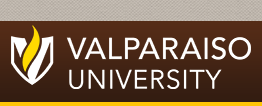Studying Metal Ion and Amino Acid Substitution on CooA DNA Binding
Faculty Sponsor
Dr. Robert Clark
College
Arts and Sciences
Department/Program
Chemistry
Presentation Type
Poster Presentation
Symposium Date
Summer 7-29-2022
Abstract
CooA, which is a protein that occurs in bacteria such as Rhodospirillum rubrum (Rr) and Carboxydothermus hydrogenoformans (Ch), acts as both a carbon monoxide (CO) sensor and transcription factor that enables the organism to grow metabolizing CO as a sole energy source. When CO binds to a CooA heme group, the CooA protein undergoes a conformational change that enables this protein to bind to DNA. The broader goal of this research is to obtain a mechanistic understanding of how the CooA heme iron, along with amino acids that are attached to that iron, enable CooA to act as a CO-specific sensor. Currently, the focus of one project is to determine how substituting iron with other transition metals affects the DNA binding activity of Ch CooA, while a second project investigates if CooA can be converted from a CO sensor to a nitric oxide (NO) sensor using site directed mutagenesis. Both these projects are evaluated using electronic absorbance (UV-Visible) spectroscopy to study the CooA iron/metal bonding environment or fluorescence spectroscopy to study CooA DNA bonding. Results obtained from current studies are reported in light of the CooA gas-sensing mechanism.
Recommended Citation
Norfolk, Nicole and Niego, Burke, "Studying Metal Ion and Amino Acid Substitution on CooA DNA Binding" (2022). Summer Interdisciplinary Research Symposium. 121.
https://scholar.valpo.edu/sires/121


